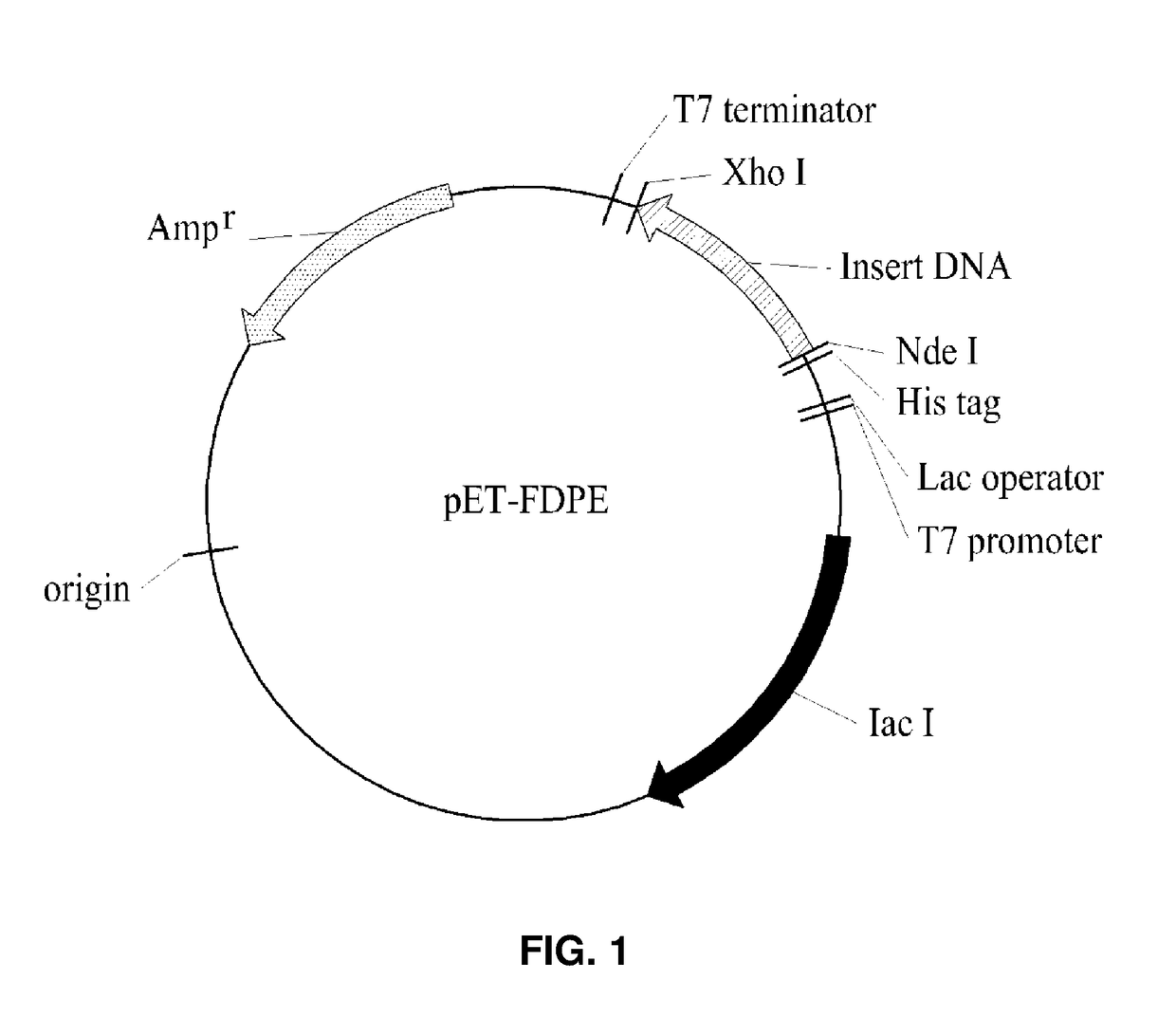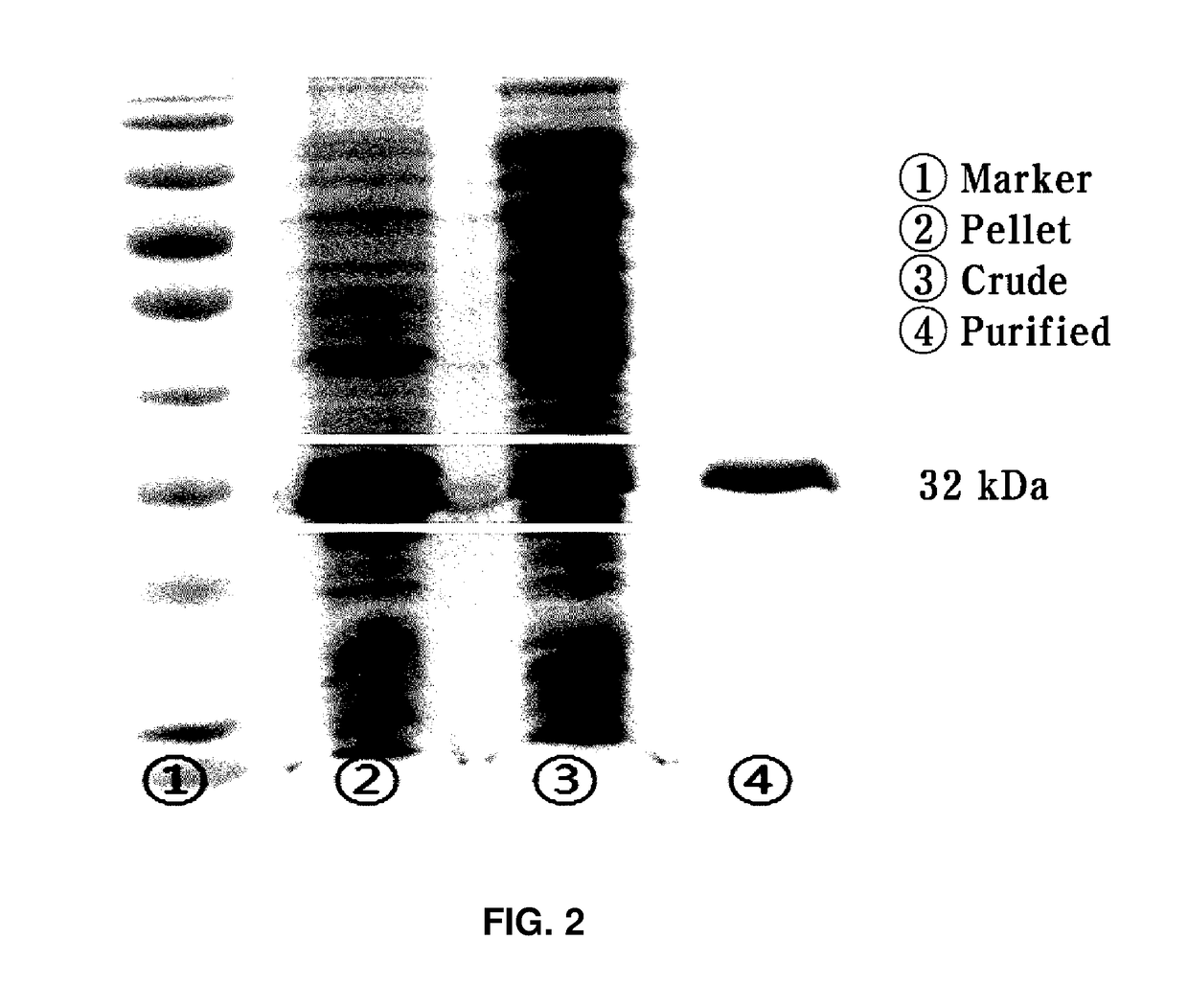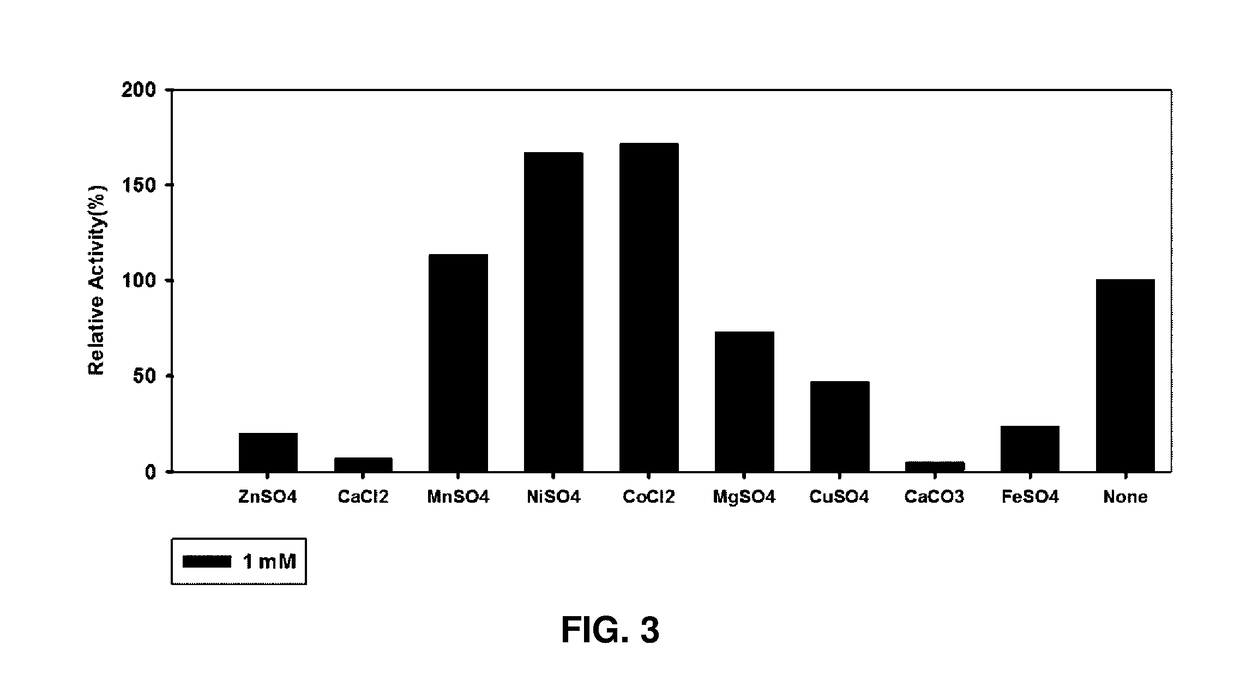Psicose Epimerase and Psicose Production Method Using Same
a technology of psicose and epimerase, which is applied in the field of new psicose epimerase, can solve the problems of unsuitable industrialization, existing enzymes have factors that increase the production cost of psicose, etc., and achieves excellent thermal stability, high yield, and maximum conversion activity.
- Summary
- Abstract
- Description
- Claims
- Application Information
AI Technical Summary
Benefits of technology
Problems solved by technology
Method used
Image
Examples
example 1
on of Recombinant Strain Producing D-Psicose 3-Epimerase
[0031]A genomic DNA was extracted from Flavonifractor plautii KCTC 5970 received from Korean Collection for Type Cultures and used as a template, and a polymerase chain reaction (PCR) was performed by using a primer and an Ex-Taq (TAKARA) polymerase for cloning a gene (a polynucleotide of SEQ ID NO: 2) coding D-psicose 3-epimerase. The following Table 2 lists a primer used for cloning the gene coding the D-psicose 3-epimerase from the genomic DNA of Flavonifractor plautii. The primers listed in the following Table 2 were prepared by Bioneer co., KR.
TABLE 2RestrictionBaseenzymeSEQsequencerecognition siteID NOPrimer type(5′→3′)included in primer3Forward primerCGG CAT ATGNde Ifor cloningAAC CCG ATTpsicoseGGA ATG CACepimeraseTAC4Reverse primerCGG CTC GAGXho Ifor cloningTTA CGC GGTpsicoseCAG CTC CTTepimeraseGAG G
[0032]Thereafter, only a desired target DNA was isolated from a PCR product by using a gel extraction kit (Qiagen) and the...
example 2
n and Purification of D-Psicose 3-Epimerase
[0033]A single colony of the transformed recombinant strain was inoculated in 15 ml of a LB-ampicillin medium (Difco) and then pre-cultured for about 6 hrs in a condition of 37° C. and 200 rpm. Thereafter, the pre-culture solution was inoculated in 500 ml of a LB-ampicilline medium and shaking-cultured in a condition of 37° C. and 200 rpm. Thereafter, when the absorbance (at 600 nm) of the culture solution was 0.5, IPTG was added to be a concentration of 0.1 mM to induce overexpression of a target enzyme. In this case, the culture from the overexpression inducing time was converted to a condition of 16° C. and 150 rpm and maintained for about 16 hrs. Thereafter, the culture solution of the recombinant strain was centrifuged for 2 mins at 13,000 rpm and a supernatant was removed to collect strain cells of the recombinant strain.
[0034]The collected strain cells of the recombinant strain were suspended in a lysis buffer (50 mM Tris_HCl 300 mM ...
example 3
ion of Characteristics of D-Psicose 3-Epimerase
(1) Analysis of Metal Ion Requirement of D-Psicose 3-Epimerase
[0035]Whether the metal ion had an effect on the D-psicose 3-epimerase obtained in Example 2 was examined.
[0036]ZnSO4, CaCl2, MnSO4, NiSO4, CoCl2, MgSO4, CuSO4, CaCO3, and FeSO4 were put in the purified enzyme buffer solution (PIPES, pH 7.5) to be 1 mM, respectively and then the metal ions were bound to the enzymes for about 1 hr. Thereafter, the enzymes bound with the metal ions were mixed with a 100 mM aqueous fructose solution as a substrate at a weight ratio of 1:1 and the mixture in which the enzyme concentration was 0.025 ml / mg and the fructose concentration was 50 mM was made and reacted for 10 mins at 60° C. Then, a hydrochloric acid solution was added thereto to stop the reaction. Further, in a control group, the same experiment was performed by using an enzyme (None) without treating the metal ion. Thereafter, an amount (mM) of produced psicose was measured and divi...
PUM
| Property | Measurement | Unit |
|---|---|---|
| temperature | aaaaa | aaaaa |
| molecular weight | aaaaa | aaaaa |
| temperature | aaaaa | aaaaa |
Abstract
Description
Claims
Application Information
 Login to View More
Login to View More - R&D
- Intellectual Property
- Life Sciences
- Materials
- Tech Scout
- Unparalleled Data Quality
- Higher Quality Content
- 60% Fewer Hallucinations
Browse by: Latest US Patents, China's latest patents, Technical Efficacy Thesaurus, Application Domain, Technology Topic, Popular Technical Reports.
© 2025 PatSnap. All rights reserved.Legal|Privacy policy|Modern Slavery Act Transparency Statement|Sitemap|About US| Contact US: help@patsnap.com



